Benjamin Jones is a landscape architect, planner, and horticulturist by trade who is the Coastal Crescent Trail Project Manager for North Carolina’s Mountains-to-Sea Trail, which spans about 1,200 miles across the state. As a staff member of Friends of the Mountains-to-Sea Trail, his job primarily consists of three components: planning the trail route through GIS and on-the-ground analysis; designing and building trail infrastructure; and conducting outreach and engagement with a number of project partners across the state that include volunteers, private landowners, land trusts, and government agencies. A master in building both trails and professional relationships, Ben enlightens us on what it takes to blaze trails where none existed before. Read on for this month’s edition of 18 Questions!
- What are the basic principles involved in planning the trail route?
Planning a trail route is complicated. We have to take into account some of our primary goals: conservation, economic development, equal access, and community building. We also consider the experience of the trail for its users and its impact on people’s ability to have recreational opportunities and healthy lifestyles.
When it comes down to the trail route itself, we first look at the physical constraints of the landscape (wetlands, steep slopes, landfills, big rivers, etc.) and the limitations of property ownership. We look for public land, corridors, and connectivity between important locations. We may connect the trail between natural heritage areas or areas of unique natural resources. We also search for historical interpretation opportunities and sites. We see how we can connect different communities to be more walkable. And we look at potential partners who can advocate for and maintain the trail.
- How has technology altered the nature of trail planning in the 21st century?
Technology has dramatically altered trail planning. Geographic Information System (GIS) technology has become integral to what we do, with tools like aerial imagery and elevation data from LiDAR sources. There is a plethora of information we can have on the computer to plan a trail corridor. This information includes census data like socioeconomic status and parcel land ownership data. The ability to record trail data information, like distance and elevation, is transformative, and we can now efficiently share this information with our collaborators.
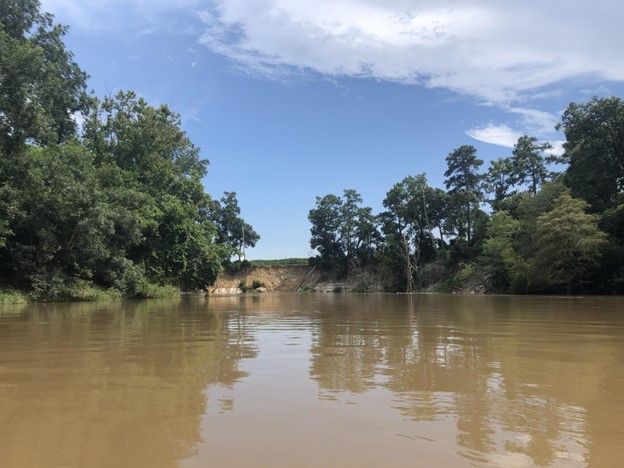
3. How does the Mountains-to-Sea Trail coincide with public and private lands?
The Mountains-to-Sea Trail originated on public lands, where the state and communities interested in the trail were able to get permission to build it. We spur off the Appalachian Trail through the Great Smoky Mountains National Park, the Blue Ridge Parkway, Pisgah National Forest, and other public landscapes that have allowed us to establish the trail in protected areas.
Now, we have exhausted almost all the publicly available land to connect the trail across North Carolina, so we are seeing more and more parts of the trail crossing private land with trail easements. This can be a challenge, but it is one defining the future of trail development for us and is allowing us to engage more in land acquisition work with land trusts, for example. This can make us more impactful in the long run.
When connecting the trail across incomplete areas, our first priority is always to get permission and free access in the form of a trail easement. We seek paid access through a trail easement if that doesn’t work. If that doesn’t work, we will try to acquire the property outright. The acquisition of property, though, is something we only do when necessary or when there is a greater conservation goal that can be accomplished.
- What happens to the trail in a natural disaster, such as flooding or forest fire?
In such cases, we will close the trail in certain areas. We will update our website, members, and partners, who will also inform us about the trail’s status. Those sections will remain closed until they are deemed suitable to be reopened, which may require waiting for floodwaters to subside, cutting down trees and removing debris, or making repairs. Forest fires are uncommon, but need to be accounted for. Many parts of the trail go through areas of public land that are intentionally burned through controlled burn programs, in which case we close the trail and inform the public.
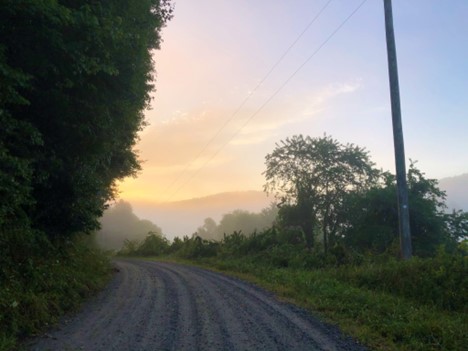
- How can the effects of such disasters be mitigated?
We cannot prevent natural disasters from occurring, but we must plan the trail to minimize its exposure to those disasters’ impacts. For example, we try to keep the trail out of the floodway and floodplain wherever possible and mitigate our exposure to areas where forest fires are a known problem. We also try to minimize disasters’ impact through our trail design. We can use flame-resistant or flood-resistant materials to build the trail in a stronger, more resilient way where exposures are high.
- Is the trail designed primarily for day hikers, thru-hikers, or a mix of both?
Definitely a mix of both. The trail as a whole serves the important purpose of being a thru-hike opportunity, which is often a higher profile and more publicized way of experiencing the trail. However, the vast majority (more than 99% of all trail users along the Mountains-to-Sea Trail) are day-hikers who hop on the trail after work to walk their dog, or on the weekend to walk with their friends and families near where they live. So our primary goal is to accommodate the day hikers and make the trail as accessible as possible to as many people as possible, while also working to make it a better experience for our thru-hikers.
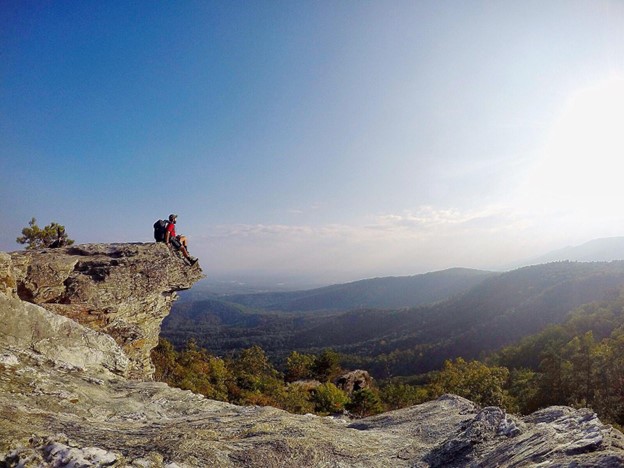
- How do you navigate conflicting interests between stakeholders, if any?
We often have conflicting interests between stakeholders over topics like public land. Each case is unique, and we treat it as such, but oftentimes, we have to make compromises. There are some locations along the trail that hunters wish to use, so we accommodate that by posting information about how people are required to wear blaze orange during hunting season. Sometimes we may even close the trail for a month or more. We highly depend on North Carolina Wildlife Resources Commission game land in eastern North Carolina to connect our trail. To use it, we have to build trust, showing that we are part of one unified outdoor community.
In an area where the trail serves several purposes, such as in an urban setting where it follows a greenway system, we have to consider users like cyclists, pedestrians, and groups. In such cases, we defer to the land manager and the function of the trail in that particular location to ensure we are not limiting access to this recreational resource.
- Describe the importance of trail volunteers.
It’s hard to overstate how vital trail volunteers are. As it exists now, the Mountains-to-Sea Trail would not be here if it were not for the volunteers. They, until recently, almost exclusively built it (of course, there are locations, often in state parks, where there has been professional trail-building work to create large bridges, greenways, etc.). Volunteers maintain sections of trails that have already been built, report issues and bad behavior on the trail, raise funds, and help us be present at events. In the future, we aim to be less dependent on trail volunteers to get things done, but we nevertheless embrace that unique aspect of this organization and community. We have the advantage of accomplishing things at a lower price and functioning as a non-profit in ways that help build relationships. When people invest time and energy into a trail, they care more about seeing it succeed.
- Who typically volunteers, and what jobs do they fulfill?
Volunteers are often retired people and they typically fulfill trail building and trail maintenance jobs, as well as outreach. Outreach may include tabling at events, leading hikes or workdays, making phone calls, and pitching in around large events. We do get other volunteers, especially corporate groups and organizations like Scouts of America and historic societies specific to certain locations along the trail.

- What challenges do hikers commonly face that can be solved through improved trail infrastructure?
The main problem is probably wayfinding and logistical concerns like safety and parking. Improved trail infrastructure can solve those problems, usually in the form of quality parking areas at trailheads with signage. That signage can include a map, information to contact the land managers, and safety resources. On the trail itself, providing erosion control and hard structures for steep slopes can help young and older people alike, while also helping to remove the danger caused by eroded or muddy slopes with loose soil. On the tech side of things, having a high-quality website that people can access for information, digital trail guides, and updates on trail closures is also critical.
- What are some ways that hikers can communicate their needs to the organization?
Hikers can use our emails (available on our website), directly call us, send a letter, or comment through the Mountains-to-Sea Trail app or some of the other platforms on which we are available, such as FarOut. Our organization can also be reached through the land managers, so if anyone is hiking at a particular state park, state forest, state historic site, or any of their federal versions, they can comment directly to their respective land managers, who will pass that information along to us. Perhaps the most commonly used method of reaching us is social media, such as on our Facebook page, where we have lots of interactions.
- How does the North Carolina state government support the Mountains-to-Sea Trail?
The state government staffs and provides resources to the North Carolina Trails Program through the Division of Parks and Recreation. There are two state trail planners and multiple trail technicians (one for each of the state’s three regions). They also administer federal trail funding, specifically the National Trails System Act funding.
Most recently, and most importantly, for the first time since the trail was created in 1977, the state legislature has directly allocated funding for state trails in North Carolina and the nonprofits that support them. This new funding, starting in the fall of 2022, is called the Complete the Trails Fund, in which a little over 29 million dollars was allocated to the 12 state trails in North Carolina. This includes the Mountains-to-Sea Trail, the first state trail and flagship trail upon which all the others connect, along with the East Coast Greenway.
By administering federal grants, supporting our trail planning efforts, and providing funding, the state does quite a lot to help us and will hopefully continue to do so in the future.
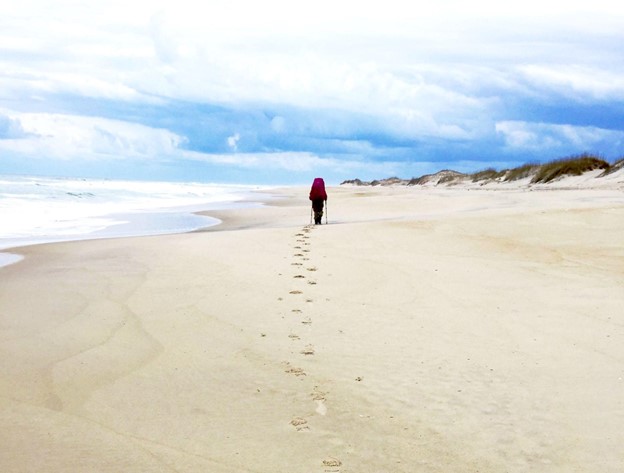
- Does the Mountains-to-Sea Trail receive any national funding or protections?
Friends of the Mountains-to-Sea Trail and the Mountains-to-Sea Trail itself do receive some national funding, but no national protection. It is not yet a national scenic trail, although I think it will be in the not-so-distant future. But otherwise, we have federal trail funding allocated to us. It is a fairly small amount, but it is something. We also have access to federal opportunities through land managers that we can use to fund trail work. This is sometimes done through the U.S. Forest Service or the National Park Service.
- Does your work involve hands-on labor in addition to your logistical tasks? If so, what do you value about that blend?
In my role as a landscape architect and planner on staff, my work does involve hands-on labor. I really value that work because it is part of my personal and professional development to not only design a section or feature of the trail, but also to learn new things in the process of building it, new techniques, and what is working and what is not.
I enjoy being out in the field, evaluating the trail and the landscapes. One of the best parts of my job is going to an area where we don’t currently have an off-road trail and investigating public and private landscapes (with permission, of course) where the trail can go. For example, I am working in an area around a lake managed by an electrical utility. I have gotten to investigate 14-16 miles of the potential trail route, learning about the area’s historic sites and conservation resources. Not only is my work benefiting the trail, but it is also teaching me about our state’s natural history and the cultural landscape it exists within.
Hands-on work also offers mental health benefits. I do a fair amount of carpentry on things like interpretive signage, trailhead kiosks, and terminus monuments. Being active and seeing the fruits of our labors is motivating and keeps me healthy.
- You are a horticulturalist by trade – what excites you most when you are out on the trail?
What excites me the most is experiencing truly remarkable nature. That may go without saying, but when I am out on the trail, and I see a giant specimen tree, a unique and rare flowering plant, or unusual wildlife activity, those are the things that get me excited and that I feel passionate about.
Building a trail itself is a reasonably straightforward task, and it is very much ingrained in who we are as humans. A trail is like the first designed and built landscape; even animals are creating landscapes. The thing that makes it unique is when you can see what the trail connects to. It’s not this simple footpath; it’s about everything around it. Of course, I enjoy an overlook or rock outcropping as well, but seeing when the trail intersects with some important native plant or historic relic protected along with the trail corridor excites me. It is good to feel like something here is being preserved for future generations.
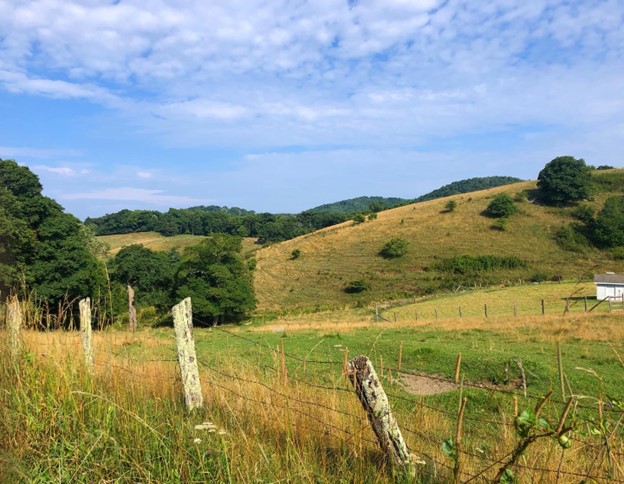
- The range of flora and fauna on the Mountains-to-Sea Trail is incredibly diverse and requires varying levels of maintenance and care; how does your work reflect that?
Typically, the land managers are the ones who maintain the greater flora and fauna on any given site. If we are working with the Forest Service on their land, they have land management plans and are typically the experts on rare and endangered species.
My work is mainly related to flora and fauna in terms of how we design and locate the trail. There is a fine balance between connecting to and showcasing natural heritage areas, versus steering the trail away from and protecting them from over-exposure to people. So you want to connect people to these special landscapes, but you also don’t want that access to be what damages that natural resource. In a lot of ways, we try to find the middle ground. We also follow the lead of the land managers. Suppose they are managing a landscape for fire (because it is a critical component of managing a landscape and rare species within it). In that case, we will locate our trail on the fire break where a disturbance is already being required so that we do not unnecessarily disturb the additional area.
- There are many long-distance trails around the world; what, in your opinion, makes the Mountains-to-Sea Trail so unique?
The Mountains-to-Sea Trail offers an amazing variety of experiences to its users. Broadly speaking, the natural landscapes are varied with the Great Smoky Mountains and the Blue Ridge Mountains in the West; the Western, Central, and Eastern Piedmont in the middle (each unique in their own right); and the coastal plains, wetlands, natural lakes, bays, maritime forests, sand dunes, and Outer Banks in the East. We cross a fantastic spectrum of ecosystems and geology, which is truly unique.
The variety of experiences outside of nature is also tremendous. This trail connects to many unique groups of people. There is the large city of Asheville, resort communities, and poor communities in Appalachia; several historic communities along the Neuse River Watershed and the Cape Fear River Watershed; rural towns and farming communities; coastal communities in the Outer Banks; and even the capital of North Carolina in the Triangle area.
I would say our trail probably has a more complex variety of experiences than any other.
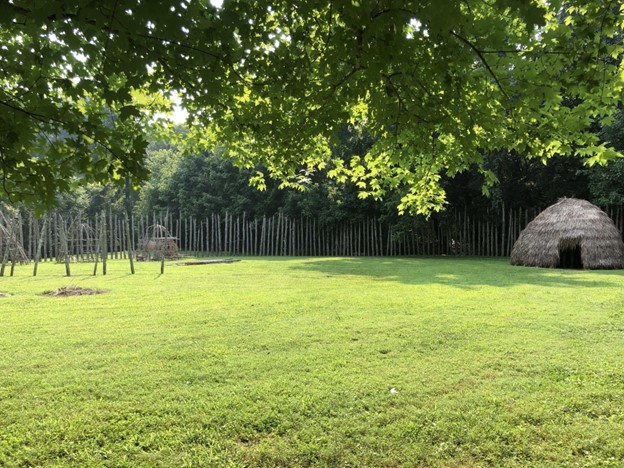
- What is most needed for the continued growth of the Mountains-to-Sea Trail?
Friends of the Mountains-to-Sea Trail, our nonprofit, has to remain strong by continuing to grow our membership, especially with the youth of our state. We also want to expand the coalition of people who use the trail, including less traditionally outdoor-focused communities. Considering the role technology plays in our lives now, it is so critical that we bring people outdoors so that they can maintain balance in life.
Access to land is critical. We are only halfway through the trail’s completion, and we have exhausted almost all of the publicly available land. In order for the trail to be completed and to grow our membership in areas where we don’t have a lot of trail, we have to acquire trail easements across private land. This means working with land trusts and conservation groups and particularly focusing on natural areas that need protection. Land easements and acquisition, of course, require funding.
Species and habitat preservation, flood mitigation, and climate change resiliency are all interwoven goals that can protect and preserve our landscapes. We are very well suited as an intermediary that can bring a variety of groups that often don’t interact into singular projects to have a greater outcome and impact. It is unique that the trail can bring together hunting groups, conservationists, bird enthusiasts, healthcare professionals, and corporate groups for the common good.
 Food
Food Farmers
Farmers Sustainable Living
Sustainable Living Living Planet
Living Planet News
News